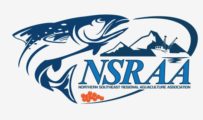Hidden Falls Hatchery is located in Kasnyku Bay on Baranof Island on Chatham Strait. This hatchery was built by the State of Alaska in 1978-79 and operated by the State until 1988 when operational responsibility was transferred to NSRAA.
For many years, Hidden Falls produced the largest chum return for common property harvest in North America, with returns averaging 1.7 million (2001-2010), and a record return in 1996 of nearly 4 million fish. During this era, the run would attract up to 240 seine boats during openings and provided fishermen with significantly greater fishing opportunity in the early portion of their seasons. Hidden Falls releases were historically split between Kasnyku Bay and Takatz Bay remote rearing sites, both within the Hidden Falls THA. The average survival from (brood year) 1977 to 2005 averaged 3.1%, varying between 1% and 7%.
In the early 2010’s, Hidden Falls survivals began to plummet. Additionally, erratic age shifts producing fewer older fish began occurring simultaneously, causing massive change and uncertainty in run utilization and value to the seiners. While this trend appeared to be taking place throughout the Northern Southeast inside subregion, the effects were felt the most at Hidden Falls. Brood years 2006 – 2016 averaged just 0.8%, only once exceeding 1% and coming in as low as 0.14%.
Multiple changes were made in an effort to turn survivals around as best we could. Theorizing that predation was a driving cause, NSRAA staff began utilizing net pen towing and fry tendering to release the fish farther away from the rearing sites, where whales and pelagic rockfish had been observed preying upon newly released fry. Studies have been conducted and are ongoing relating to whale behavior and marine predator biomass. Release size was increased to 4 grams for half the production as these fish were documented to leave the near shore environment immediately upon release. Hidden Falls stock eggs were also incubated and released at Medvejie hatchery as a backup brood source if all else failed. By the time Southeast Cove and Thomas Bay became NSRAA operated projects, poor survival at Hidden Falls had become the new normal. Developing these programs with Hidden Falls stock fry meant shifting production away from Takatz releases entirely, in hopes that these newer sites might experience better survivals. During years of extremely poor returns, a system for brood stock collection and transport was developed, however egg quality was poor, so this was only useful as a last resort.
In addition to chum releases, Coho and Chinook programs at Hidden Falls have experienced a similar trend. While initial returns increased substantially under NSRAA’s management as the result of two major hatchery expansions – one in 1987 and another in 2004, recent survivals have been marginal at best. Fortunately, coho survivals at Deer Lake remain relatively high and hope springs eternal for the Chinook programs with ongoing efforts to develop the Keta River Brood Stock via Little Port Walter. Most recently, all Andrews creek Chinook production has been shifted away from Hidden Falls to locations experiencing higher survivals.
Thankfully, while all the difficulty was taking place at Hidden Falls, the Crawfish Inlet program came online. Record survivals and value kept the association afloat and allowed for continuous access of NSRAA chum to the seiners. Staff at Hidden Falls diligently carried out their duties and have been hoping to see an uptick in survival. Instead of a default commercial opening at Hidden Falls, NSRAA conducted controlled experimental cost recovery through which careful evaluation of the run was performed before any openings were held. Through this manner, and some alterations to the hatchery ladder and recruiting system, we managed to collect full brood stock all but one year.
Then, in 2022, we saw signs of life. While we have learned to be hesitant in our excitement at an unusually large return of three-year-olds, since age shifts towards younger fish have been a regular occurrence, in 2022 we saw the 5th highest marine survival for three-year-olds in the programs 43-year history. Even with recent age shifts, this should produce a large surplus of four-year-olds and potentially the best return to the site in decades. Results from recent acoustic surveys have shown a predator biomass smaller than anticipated, and the most recent returns of tendered fry appear to have a 60% increase in survival over their counterparts. We are currently optimistic that the returns to Hidden Falls will climb back towards historical averages. In the meantime, every effort will continue to make this happen.
Hidden Falls Hatchery Visitor Schedule
Hidden Falls has become a popular destination for visitors! Follow instructions on this PAGE to schedule a visit.









